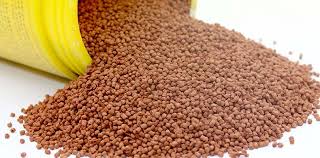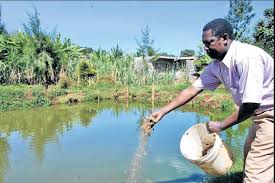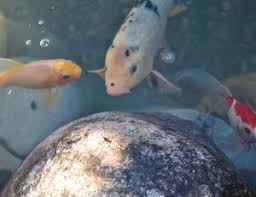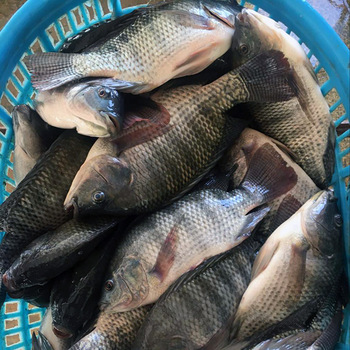By Joseph Mugenyi
Kibiito: Tilapia is the common name for nearly a hundred species of cichlid fish from the coelotipine, coptodonine, heterotilapine, oreochromine, pelmatolapiine and tilapiinetribes (formerly all were in Tilapiini), with the economically most important species placed in Oreochromini.
Tilapia are mainly freshwater fish inhabiting shallow streams, ponds, rivers, and lakes, and less commonly found living in brackish water.
Historically, they have been of major importance in artisanal fishing in Africa, and they are of increasing importance in aquaculture and aquaponics.
In a one on one conversation, one of the fish farmers Mr Mugisha Saviour of MOFU fish farms told our reporter that;
Tilapia doesn’t rely on expensive feeds. It can feed on algae or water insects.
Keep adding fertilizer or chicken droppings to grow enough algae and attract insects such as termites and worms.
You can also use supplement feeds, such as rice bran, flax, wheat germ, bread crumbs and vegetable products. Feed the fish every morning and afternoon.

Note: Do not allow food remains to stay for long in the pond as they can become toxic or change the water chemistry.
Many tilapia fish feeds have been manufactured, but Purina Mills Aquamax stands out.
He added that “It took me a while to discover this feed and I regret not knowing about it when I was starting this economic activity. The best thing about it is that it allows the fish to grow quicker and healthier and reproduce faster.”
“I’m harvesting large-sized, fleshy tilapia because of this feed! If you are getting those skinny and bony fish, it is the high time you start using Purina Mills Aquamax! When you begin using this feed, you will start getting meaty fish in short periods of time.”

When raising tilapia in tanks or intensive recirculating systems, natural foods will need to be supplemented or replaced with formulated foods. Newly hatched fry require smaller food particles. They can be fed a specially formulated powder that can meet their nutritional requirements at this crucial stage of growth. Fingerlings can be fed larger, formulated foods that contain digestible proteins and fats to promote growth.
As tilapia increase in size, they can be feed a pelleted diet that contain key nutrients such as proteins (amino acids), fats, minerals, and vitamins. Tilapia raised in tanks cultures benefit from having a consistent diet compared to tilapia that depend on natural foods in native water bodies.
Formulated with wheat germ, bread crumbs and other nutritious products, this feed allows your fingerlings to grow to mature, big fish in less than 6 months.

Tilapia are also known to be a mouth-breeding species, which means they carry the fertilized eggs and young fish in their mouths for several days after the yolk sac is absorbed .
Get all the agricultural information here bi-weekly. Mugenyi Joseph (MJ Farmer) is a practicing Agribusiness entrepreneur based in Kibiito and a software engineering student at Makerere University. He can be reached on 0701-443309, Email: mugenyijosemj@gmail.com




